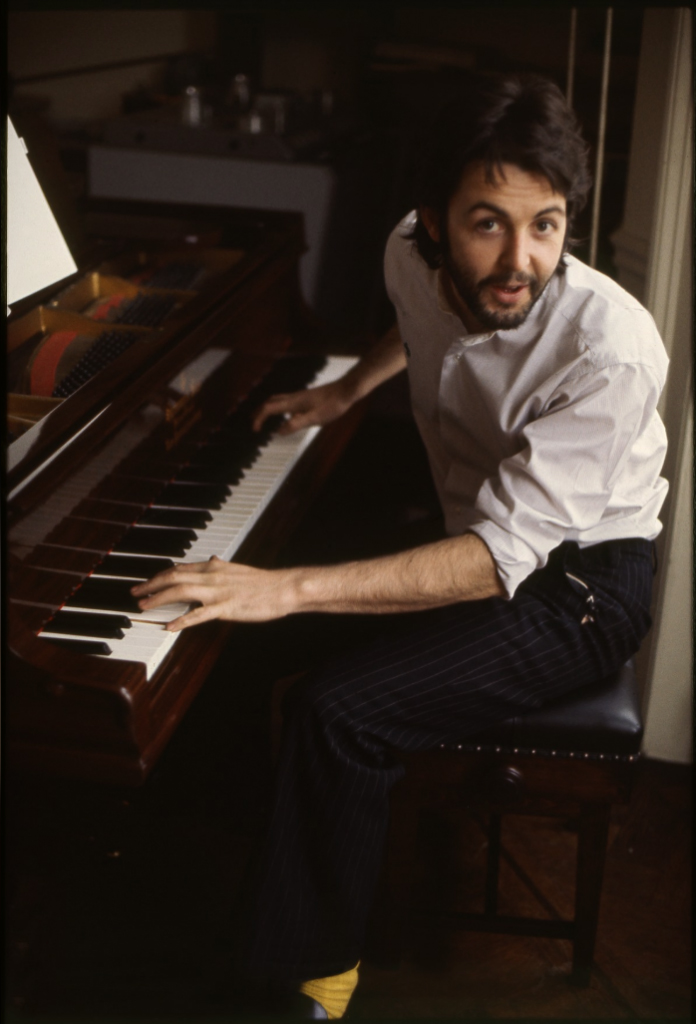Recording studio: At home, Cavendish Avenue, St. John's Wood, UK
Previous session Jan 31, 1969 • Get Back sessions - January 31, 1969 - Day 20
Film Jan 31, 1969 • Shooting of "Let It Be" promo film
Article Feb 01, 1969 • Allen Klein, John Eastman, and The Beatles discuss about NEMS
Session February 1969 • Home recording - "Goodbye"
Some of the songs worked on during this session were first released on the "Abbey Road (50th anniversary boxset)" Official album.
As a follow-up to Mary Hopkin’s first single “Those Were The Days” (released in September 1968) and first album “Post Card” (released in February 1969), Paul McCartney decided to write her a song for her next single.
I didn’t have in mind any more Russian folk songs so I just wrote one for her. I thought it fit the bill. It wasn’t as successful as the first one but it did all right. My main memory of it is from years later, going on a boat trip from the north of Scotland to the Orkney Islands. The skipper of the boat was called George, and he told me it was his favourite song. And if you think of it from a sailor’s point of view, it’s very much a leaving-the-port song. He had the strangest Scottish accent, almost sort of Norwegian, as the Orkneyans do. He was quite proud of the fact that that was his favourite song.
Paul McCartney – from “Many Years From Now”, by Barry Miles, 1997
Paul has an idea for my next single, but it won’t be for a while yet. I don’t think there’s any need to rush after ‘Those Were The Days’, because, really, this is the follow-up.
Mary Hokpin – Interviewed during the launch party for “Post Card”, February 13, 1969 – From New Musical Express – February 22, 1969
Paul recorded a demo version of this song – named “Goodbye” – at his home. It was then pressed on a Dick James acetate at Apple’s headquarters at 3 Savile Row, for Mary to learn and for arranger Richard Hewson to write a score. This acetate was sold at auction on December 22, 1981. This demo was released on the “Abbey Road” 50th-anniversary re-release in 2019.
But according to a member of the Apple-signed band, Mortimer, Paul didn’t record the demo at his home, but he was at Apple Studio and helped by George Martin.
We got a memo from McCartney saying that he wanted material for Mary Hopkin’s new single, and he had everybody in the company trying to write her something. We wrote a song and put it down, but nothing happened. I remember I was down in the main studio. I was at Apple by myself, and I went down to the studio and heard a guitar strumming. It was just George Martin and Paul McCartney in the studio, and the lights were out. I sat in the corner and listened to Paul put down a version of “Goodbye,” and George was putting it down on tape. The studio was in shambles, but they recorded that demo there.
Tom Smith, from the band Mortimer – From “Those Were The Days 2.0” by Stefan Granados
“Goodbye” would be recorded by Mary Hopkin on March 1 and 2, 1969, and released on March 28, 1969.

Written by Paul McCartney
Recording
AlbumOfficially released on Abbey Road (50th anniversary boxset)
Solid State: The Story of "Abbey Road" and the End of the Beatles
Acclaimed Beatles historian Kenneth Womack offers the most definitive account yet of the writing, recording, mixing, and reception of Abbey Road. In February 1969, the Beatles began working on what became their final album together. Abbey Road introduced a number of new techniques and technologies to the Beatles' sound, and included "Come Together," "Something," and "Here Comes the Sun," which all emerged as classics.

Notice any inaccuracies on this page? Have additional insights or ideas for new content? Or just want to share your thoughts? We value your feedback! Please use the form below to get in touch with us.